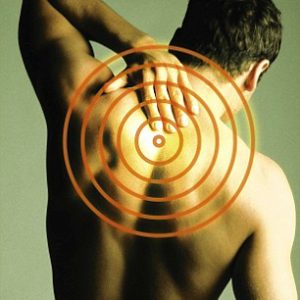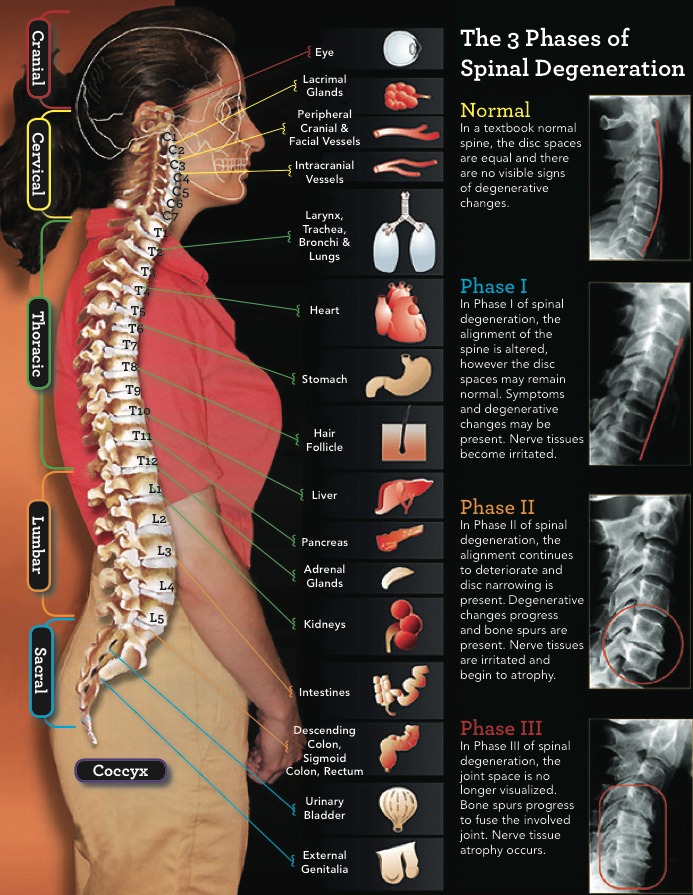 What Next?
What Next?
You entered our chiropractic office feeling terrible and now you are experiencing the wonders of what happens when your body and nervous system are subluxation-free. You have less structural stress and can send more healing energy throughout your entire being.
You’d be happy to return if your health deteriorates to the point where you feel terrible again but your chiropractor suggests you return even if you feel fine.
“Why should I return if I’m feeling fine?” you may ask. “Why not wait?”
Why Not Wait?
Of course you can wait until you’re miserable again, but should you? You may be making a big mistake if you wait until you have symptoms to do something about your health.
Lack of pain is a poor way of determining how healthy you are. In fact, it can be dangerous.
Death Warmed Over
We’ve all seen people looking like death warmed over who “feel fine.” They are walking targets, waiting for disease to strike before they decide to do anything about their health. They “feel fine” but have no energy; they “feel fine” but sleep poorly; they “feel fine” but are tired, have aches and pains, headaches or backaches.
Too many people who “feel fine” one day have a sudden heart attack, stroke, debilitating pain or are diagnosed with a serious disease such as cancer the next day.
It cannot be emphasized enough that “feeling fine” is no indicator of your health status.
Why Do I Need So Many Adjustments?
Most people first visit their chiropractor after they’ve had years of long-standing health-undermining subluxations. By that time internal scar tissue (fibrosis) has built up around the spinal discs, nerves and joints.1
Long-standing subluxations also cause postural changes, tender muscle areas2 and trigger or tender spots.3 You may “feel fine” but when someone touches a “hot spot” you jump! This scar tissue takes a long time to dissolve and heal and it may take months or years before you are at your physiological optimum again.
The earlier you begin chiropractic care the better; the longer you wait, the more scar tissue builds up4 and the longer it will take to resolve.
Symptom Relief Or True Healing?
Although your pain may have diminished, the weakness in your structural system—spine, ligaments, discs, tendons, muscles and bones— usually remains. It may take months or years for your body to replace the internal scar tissue and rebuild. True healing takes time.
 Why Periodic Care?
Why Periodic Care?
So although symptoms may disappear after a few chiropractic adjustments, the degeneration caused by years of uncorrected subluxations usually remains. That is one of the major reasons why the spine and structural system take time to heal.
Sometimes we see people who last saw a chiropractor “years ago when my back went out.” They stopped care after they felt better. However, in time, as they are assaulted by life’s stresses, their structural system will resubluxate and here they are in our office. This time their symptoms may be a little worse and it will take a little longer to go away (“I don’t understand it doctor, the last time I felt better after a couple of visits….”) because there may be more degeneration.
Periodic Subluxation Correction
The true purpose of chiropractic is not as a treatment of aches and pains but to rid your body of subluxations as they occur so you are better able to adapt to life’s stresses. Successfully adapting to life’s stresses is what true health is all about. That’s why people who choose a chiropractic lifestyle report better quality of life, improved physical health, improved emotional health, less perceived stress in their lives, less drugs in their lives and more energy, vitality and life enjoyment.5-11
Better Adaptation With Chiropractic
Your body’s wisdom sends energy and information over your brain, spinal cord and nerves (nervous system); this helps you adapt your internal environment (body chemistry and organs) and your external environment (the world, everything you eat, drink and breathe) to maintain homeostasis or balance between you and the world. When this energy and information are flowing through you without interference your body and mind are more sensitive and attuned to your life and your needs.
Our Goal For You
Our goal as chiropractors is to keep your structural and nervous systems free of blockages so your ability to adapt to life’s stresses and challenges is enhanced. You will be stronger, more balanced and more stable; you will thrive, grow and better enjoy life as you continue on your journey to be the best you can be. Life’s challenges will become stepping stones to help bring out the best in you so that you will be truly healthy, happy and in tune with the magic of life.
It’s More Than Pain Relief
Why use chiropractic as an “aspirin” to free you from pain when you can use chiropractic to ensure better health, vitality and life enjoyment for yourself and your entire family for your entire lives? Keep yourself and your loved ones healthy with periodic chiropractic checkups.
For an appointment at Performance Chiropractic, call us at (661) 942-5000.
References
- Gunn C. Treating myofascial pain: intramuscular stimulation (MS) for myofascial pain syndromes of neuropathic origin. University of Washington, 1989.
2. Hiemeyer K et al. Dependence of tender points upon posture: a key to the understanding of fibromyalgia syndrome. Journal of Manual Medicine. 1990;5:169-174.
3. Dishman R. Review of the literature supporting a scientific basis for the chiropractic subluxation complex. JMPT. 1985;8:163-174.
4. Kelman Cohen I et al. Wound Healing, Biochemical and Clinical Aspects. New York: W.B. Saunders Co., 1992:110.
5. Meade TW. Randomized comparison of chiropractic and hospital outpatient management for low back pain: results from an extended follow-up. British Medical Journal. August 5, 1995;311.
6. Blanks RHI, Schuster TL. A retrospective assessment of network care using a survey of self-rated health, wellness and quality of life. JVSR. 1997;1(4):1.
7. Marino MJ, Phillippa ML. A longitudinal assessment of chiropractic care using a survey of self-rated health wellness & quality of life: a preliminary study. JVSR. 1999;3(2):1-9.
8. Desaulniers AMJ. Effect of subluxation-based chiropractic care on quality of life in a patient with major depression. JVSR. April 23, 2008;1-7.
9. Hoiriis KT, Burd D, Owens EF. Changes in general health status during upper cervical chiropractic care: a practice-based research project update. Chiropractic Research Journal. 1999;6(2):65-70.
10. Ressel O, Rudy R. Vertebral subluxation correlated with somatic, visceral and immune complaints: an analysis of 650 children under chiropractic care. JVSR. October 18, 2004;1-23.
11. Study associates chiropractic with better health in the elderly. Today’s Chiropractic. November/December 1996.